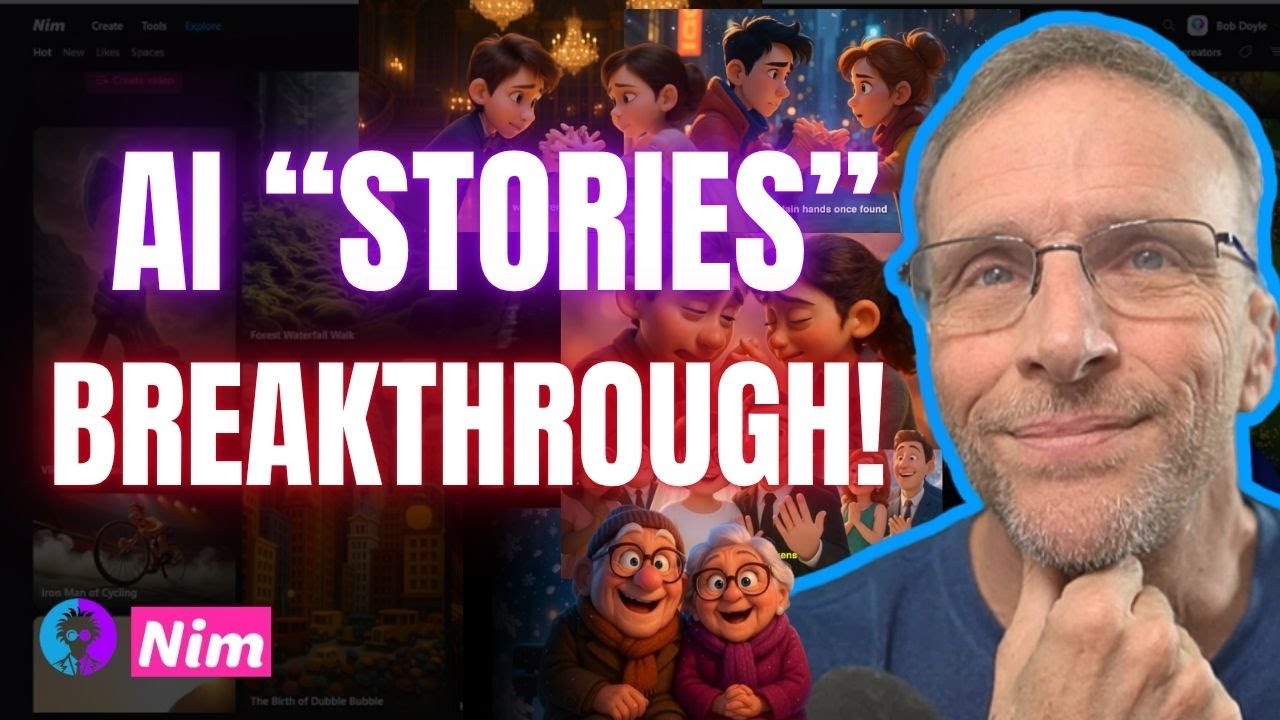In the video, Bob Doyle showcases the NIM AI platform’s new V3 and Stories features, highlighting how users can quickly create dynamic AI-generated videos and faceless YouTube content through simple text prompts, automated research, and customizable animations. He demonstrates the platform’s ease of use and flexibility while acknowledging current limitations, expressing optimism about its future potential in AI-driven video creation.
In this video, Bob Doyle introduces two exciting new features on the NIM AI platform: V3 and Stories. V3 is showcased through impressive AI-generated video avatars created purely from text prompts, demonstrating dynamic camera movements and natural-sounding voiceovers. Bob highlights some challenges, such as pronunciation issues with his name, and shares tips on how to improve results, like using capitalization and punctuation to influence the AI’s speech and animation.
The main focus of the video is the Stories feature, which allows users to quickly generate faceless YouTube videos by simply inputting a prompt. This feature automatically researches the topic, creates images, generates a script, adds voiceovers, captions, and background music, and compiles everything into a video slideshow. Users can select various visual styles, voice tones, and scene lengths, making it a versatile tool for content creators looking to produce videos efficiently without filming.
Bob demonstrates how the Stories feature works by creating several example videos, including historical explanations and fictional narratives. Initially, the videos are presented as animated slideshows, but users can enhance them further by applying animation models like Cling 2.1 Pro, which brings scenes to life with smooth motion and more engaging visuals. Although not perfect, this one-click solution is praised for its quality and ease of use compared to other AI video generators.
Throughout the video, Bob emphasizes the flexibility of the NIM platform, noting the ability to customize voice selections, captioning, and animation styles. He also points out some current limitations, such as inconsistent character appearances across scenes and occasional voice mismatches, but remains optimistic about future improvements. The platform’s rapid user adoption and continuous feature updates indicate strong demand and ongoing development in AI-driven video creation tools.
In conclusion, Bob encourages viewers interested in AI creative tools to subscribe to his channel for more content like this. He appreciates the NIM platform’s innovative approach to simplifying video production and sees it as a significant step forward in AI storytelling technology. The video ends on a humorous note, reinforcing Bob’s engaging and approachable style while inviting viewers to explore the evolving capabilities of AI in media creation.
